 W
WA cactarium or cactuario is a garden dedicated to the planting of cactus. Although they generally specialize in collecting cacti, they can also include other desert plants such as sabla, agaves or crassulaceae, although then we would be talking about a xeriscaping.
 W
WThe Arizona Cactus Garden, or, officially, Arizona Garden, also known as the Cactus Garden, is a small botanical garden specializing in cactus and succulents. It is located on the campus of Stanford University, Stanford, California, USA, and open to the public daily without charge.
 W
WBoyce Thompson Arboretum is the largest and oldest botanical garden in the state of Arizona. It is one of the oldest botanical institutions west of the Mississippi. Founded in 1924 as a desert plant research facility and “living museum”, the Arboretum is located in the Sonoran Desert on 392 acres along Queen Creek and beneath the towering volcanic remnant, Picketpost Mountain. Boyce Thompson Arboretum is on U.S. Highway 60, an hour's drive east from Phoenix and 3 miles (4.8 km) west of Superior, Arizona.
 W
WDesert Botanical Garden is a 140-acre (57 ha) botanical garden located in Papago Park, at 1201 N. Galvin Parkway in Phoenix, central Arizona.
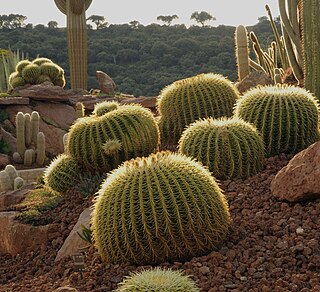 W
WDesert City is a plant nursery and botanical garden specialized in the cultivation and sale of xerophytic plants from the five continents, with over 600 species on display. It exhibit and disseminate cacti and also succulents and native plants of the Mediterranean region. It is Europe’s largest cactus garden. Desert City has remarkable plant greenhouse and garden, which architectural design won numerous awards.
 W
WThe Desert Garden Conservatory is a large botanical greenhouse and part of the Huntington Library, Art Collections and Botanical Gardens, in San Marino, California. It was constructed in 1985. The Desert Garden Conservatory is adjacent to the 10-acre (40,000 m2) Huntington Desert Garden itself. The Garden houses one of the most important collections of cacti and other succulent plants in the world, including a large number of rare and endangered species. The 3,000-square-foot (280 m2) Desert Garden Conservatory serves The Huntington and public communities as a conservation facility, research resource and genetic diversity preserve. John N. Trager is the Desert Collection curator.
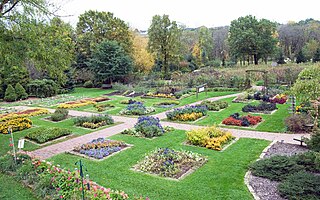 W
WThe Dubuque Arboretum and Botanical Gardens 52 acres (210,000 m2) are an arboretum and botanical gardens established in 1980 and located at 3800 Arboretum Drive, Dubuque, Iowa. It is open, without charge, daily throughout the year. The arboretum is the largest in the United States staffed entirely by volunteers. The Arboretum is a popular spot in the community for outdoor weddings and is also a venue for musical entertainment during the summer months.
 W
WEthel M Botanical Cactus Gardens is a 3-acre (1.2 ha) botanical garden located at the Ethel M Chocolate Factory in Henderson, Nevada. The gardens, and the factory itself, are open to the public with no admission charge.
 W
WThe Huntington Desert Garden is part of The Huntington Library, Art Collections and Botanical Gardens in San Marino, California. The Desert Garden is one of the world's largest and oldest collections of cacti, succulents and other desert plants, collected from throughout the world. It contains plants from extreme environments, many of which were acquired by Henry E. Huntington and William Hertrich in trips taken to several countries in North, Central and South America. One of the Huntington's most botanically important gardens, the Desert Garden brought together a group of plants largely unknown and unappreciated in the beginning of the 1900s. Containing a broad category of xerophytes, the Desert Garden grew to preeminence and remains today among the world's finest, with more than 5,000 species in the 10 acre garden.
 W
WThe Jardin botanique d'Èze, also called the Jardin exotique d'Èze or simply the Jardin d'Èze, is a botanical garden located on the Place du Général de Gaulle in Èze, Alpes-Maritimes, Provence-Alpes-Côte d'Azur, France.
 W
WThe Jardín de Cactus is a cactus garden on the island of Lanzarote in the Canary Islands. It is situated in the village of Guatiza, in a former quarry where volcanic sand lapilli was extracted to spread on cultivated areas to retain moisture. Prickly pears are grown in the area for the production of cochineal, an insect from which the natural dye carmine is derived.
 W
WThe Jardín Etnobotánico de Oaxaca is a botanical garden in Oaxaca City, Mexico. It occupies 2.32 acres of land adjacent to the Church of Santo Domingo. It is administered by the state government of Oaxaca.
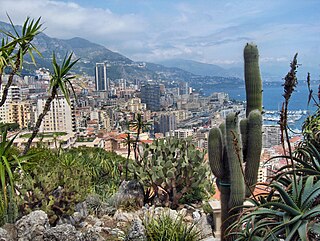 W
WThe Jardin Exotique de Monaco is a botanical garden located on a cliffside in Monaco.
 W
WThe Kapiʻolani Community College Cactus Garden is a small botanical garden specializing in cactus. It is located on the Kapiʻolani Community College campus, near Parking Lot C, at 4303 Diamond Head Road, Honolulu, Hawaiʻi. The garden was created by Moriso Teraoka in 1988.
 W
WThe Living Desert Zoo and Gardens, formerly the Living Desert Museum, is a non-profit zoo and desert botanical garden located in Palm Desert, Riverside County, California, United States. The Living Desert is home to over 500 animals representing over 150 species and welcomes over 500,000 visitors annually. Situated in the Sonoran Desert of the Coachella Valley and Santa Rosa Mountains foothills near Palm Springs, California, The Living Desert is set on 1,200 acres, with 80 developed as zoo and gardens.
 W
WGanna Walska Lotusland, also known as Lotusland, is a non-profit botanical garden located in Montecito, near Santa Barbara, California, United States. The garden is the historic estate of Madame Ganna Walska. The County of Santa Barbara restricts visitation via a conditional use permit: Lotusland botanic garden is open to the public by advance reservation only, with walking tours 1½ to 2 hours long.
 W
WThe Majorelle Garden is a two and half acre botanical garden and artist's landscape garden in Marrakech, Morocco. It was created by the French Orientalist artist Jacques Majorelle over almost forty years, starting in 1923, and features a Cubist villa designed by the French architect, Paul Sinoir in the 1930s. The property was the residence of the artist and his wife from 1923 until their divorce in the 1950s. In the 1980s, the property was purchased by the fashion designers, Yves Saint-Laurent and Pierre Bergé who worked to restore it. Today, the garden and villa complex is open to the public. The villa houses the Berber Museum and has recently opened the Yves Saint Laurent Museum.
 W
WThe Moir Gardens are botanical gardens located within the Outrigger Kiahuna Plantation, 2253 Poipu Road, Poipu, Kauai, Hawaii. Just to the east is Poipu Beach Park. They are open daily without charge.
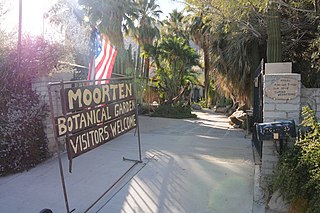 W
WThe Moorten Botanical Garden and Cactarium is a 1-acre family-owned botanical garden specializing in cacti and other desert plants, located at 1701 South Palm Canyon Drive, Palm Springs, Riverside County, California, United States. It is in the Colorado Desert ecosystem.
 W
WThe National Cactus and Succulent Botanical Garden and Research Centre, known as the Cactus Garden, is a 7 acres cactus garden in Sector 5 of Panchkula, Haryana, India, was established in 1987, and is known for its rare and endangered species of Indian succulent plants.
 W
WThe Orman Garden is one of the most famous Botanical gardens in Egypt. It is located at Giza, in Cairo. It dates back to 1875 and the reign of Khedive Isma'il Pasha who established the garden on a larger site than it presently occupies as part of the Palace of the Khedive. A great lover of gardens, the Khedive entrusted the design of the garden to the French landscaper Jean-Pierre Barillet-Deschamps. It became a public botanical garden in 1910/1917 and put under the Ministry of Agriculture management.
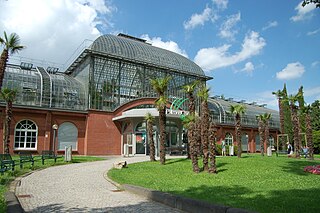 W
WThe Palmengarten is one of three botanical gardens in Frankfurt am Main, Germany. It is located in the Westend-Süd district. It covers a surface of 22 hectares. It is major tourist attraction.
 W
WQuito Botanical Garden is a park, botanical garden, arboretum and greenhouse s of 18,600 square meters that it is planned to increase, it houses species of plants of the country, which is found in the city of Quito, Ecuador. The identification code of the Botanical Garden Quito as a member of the Botanic Gardens Conservation International (BGCI), as well as the initials of its herbarium is QUITO .
 W
WValley Nature Center is a 6-acre park and nature preserve in Gibson City Park, Weslaco, Texas. Its focus is environmental education about the natural history of the Lower Rio Grande Valley.
 W
WVermont Experimental Cold Hardy Cactus Garden is a small botanical garden less than 100 square feet specialized in cactus and succulents, in Middlebury, Vermont, United States.